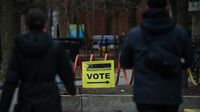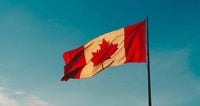Canadians went to the polls on April 28, 2025, to elect their next federal government, concluding a 36-day election campaign that was marked by rising tensions with the United States and economic instability. The election day saw six candidates vying to represent the Gaspésie–Îles-de-la-Madeleine–Listuguj riding in the House of Commons, with Liberal candidate Diane Lebouthillier, Bloc Québécois candidate Alexis Deschênes, and Conservative candidate Jean-Pierre Pigeon being the most prominent contenders.
Advance voting took place from April 18 to April 21, and as the polls closed at 9:30 PM across Quebec, the first results began to emerge shortly thereafter. The election came at a time when many Canadians were concerned about the cost of living and the impact of U.S. tariffs imposed by President Donald Trump, who had made headlines by suggesting that Canada should consider becoming the 51st state of the United States. This controversial statement sparked responses from various political leaders, including Jagmeet Singh, leader of the New Democratic Party (NDP), who emphasized that "Trump does not choose our future."
In the Gaspésie–Îles-de-la-Madeleine riding, the election was particularly competitive. Diane Lebouthillier, who previously won the seat in 2021 with 46.4% of the vote, was defending her position against Deschênes, who criticized subsidies to the oil industry and called for greater regional powers. Pigeon, on the other hand, advocated for a gradual energy transition.
On April 23, 2025, a debate organized by le Son de la mer featured Lebouthillier and Deschênes, while Pigeon declined to participate. This debate was part of a series of thematic interviews conducted by the newsroom with candidates from parties that received more than 4% of the vote in the previous election. The interviews covered various issues, including environmental policies and economic perspectives, with candidates outlining their visions for the future.
As the evening progressed, updates on the election results indicated that the Liberal Party was maintaining a lead over the Conservative Party. By 9:29 PM, the latest count showed the Liberal Party of Canada (PLC) with 23 seats, while the Conservative Party of Canada (PCC) had secured 10 seats. The Bloc Québécois (BQ) managed to elect one member, but both the NDP and the Green Party failed to gain any seats.
Prior to the election, former Prime Minister Jean Chrétien predicted a Liberal majority, stating, "I expect to celebrate the majority government of the Liberal Party" after the polls closed. His confidence was buoyed by recent polling data indicating that the Liberals, under the leadership of Mark Carney, were still in the lead overall, although the race against the Conservatives remained tight.
As results continued to come in, the Elections Canada website experienced technical difficulties, prompting concerns among voters. Many Canadians reported issues accessing the site, leading Elections Canada to issue a statement on social media confirming the problems and advising voters to check their information cards for polling locations.
In Gaspésie–Îles-de-la-Madeleine, the first results indicated that Alexis Deschênes was in the lead, which could signal a significant shift in the political landscape of the region. The Bloc Québécois aimed to minimize losses, having faced challenges during the campaign amid the backdrop of U.S. political tensions.
As the night unfolded, it became clear that voter turnout was strong, particularly among new voters. Reports suggested that the Conservative Party was optimistic about its performance with this demographic, which includes those who did not participate in the last two federal elections.
Dominic LeBlanc, a long-serving Liberal MP, successfully retained his seat in New Brunswick for the ninth time, garnering approximately 58% of the vote against his Conservative rival. This victory was seen as a testament to the enduring support for the Liberal Party in the region.
Overall, the 2025 federal election was characterized by a mixture of hope and uncertainty as Canadians navigated a complex political landscape. With results still rolling in, the nation awaited the final count and the implications for the future governance of Canada.






